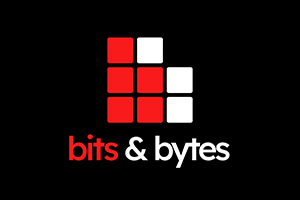Breaking It Down: How Chunking Boosts User Experience
Bits & Bytes
 Headings that are meaningful to the content they introduce—and properly structured—are
essential elements of any web page. Alongside headings, grouping information in a
logical, digestible way significantly enhances readability and comprehension. These
ideas are all centered around a core UX of chunking. In this post, we’ll explore the concept of chunking, provide examples, and share
practical tips for applying this principle to your website.
Headings that are meaningful to the content they introduce—and properly structured—are
essential elements of any web page. Alongside headings, grouping information in a
logical, digestible way significantly enhances readability and comprehension. These
ideas are all centered around a core UX of chunking. In this post, we’ll explore the concept of chunking, provide examples, and share
practical tips for applying this principle to your website.
What is Chunking?
Chunking originates from George A. Miller’s seminal paper, The Magical Number Seven, Plus or Minus Two: Some Limits on Our Capacity for Processing Information. The concept involves breaking down information into smaller, manageable units or “chunks” that form a coherent whole. This enables users to scan content more easily and understand the relationships between different sections through visual design and heading structure.
Why is Chunking important?
Studies have shown that users rarely read web pages or email newsletters word for word. According to research by the Nielsen Norman Group, 79% of users scanned pages, while only 16% read them line by line. Chunking addresses this by breaking down text-heavy pages into easily skimmable sections—aligning with how people prefer to consume content online.
Whether you're a content editor or a subject-matter expert, structuring content into well-defined, scannable chunks improves both readability and findability. Clear content structure and grouped, related information help users locate what they're seeking more efficiently.
Chunking in action
- Headings and Subheadings: Clear, descriptive headings and subheadings are essential for organizing content. They act as visual anchors, allowing users to quickly scan for answers or navigate steps in a process.
- Presented Ideas: When creating or editing content, be mindful of how many ideas are presented per paragraph. Combining multiple concepts can cause users to overlook key information. Use the inverted pyramid approach: place the core idea at the beginning of the paragraph, followed by supporting details.
- Length and Structure: Long paragraphs filled with complex ideas or terminology can overwhelm readers. Aim to reduce paragraph length, highlight key terms, and use bullet points where possible. These techniques make your content more accessible and user-friendly.
Take action
 To apply chunking effectively, start by reviewing your content for long paragraphs,
unclear headings, or multiple ideas crammed into one section. Break content into smaller
parts, write clear and purposeful headings, and use bullet points or formatting to
guide the reader’s eye.
To apply chunking effectively, start by reviewing your content for long paragraphs,
unclear headings, or multiple ideas crammed into one section. Break content into smaller
parts, write clear and purposeful headings, and use bullet points or formatting to
guide the reader’s eye.
Chunking isn’t just a design technique—it’s a user-first strategy that improves clarity, speeds up navigation, and helps your audience find what they need more efficiently. Small changes in structure can lead to big improvements in user experience.
